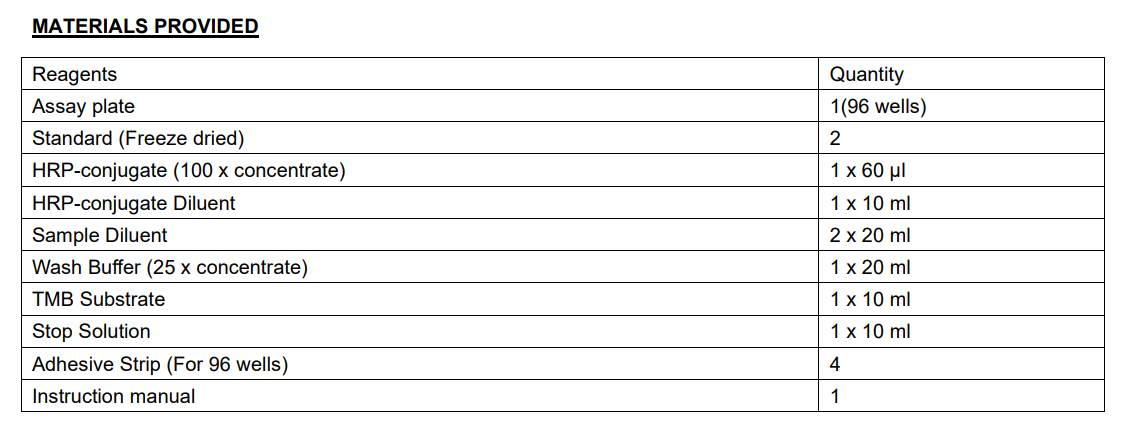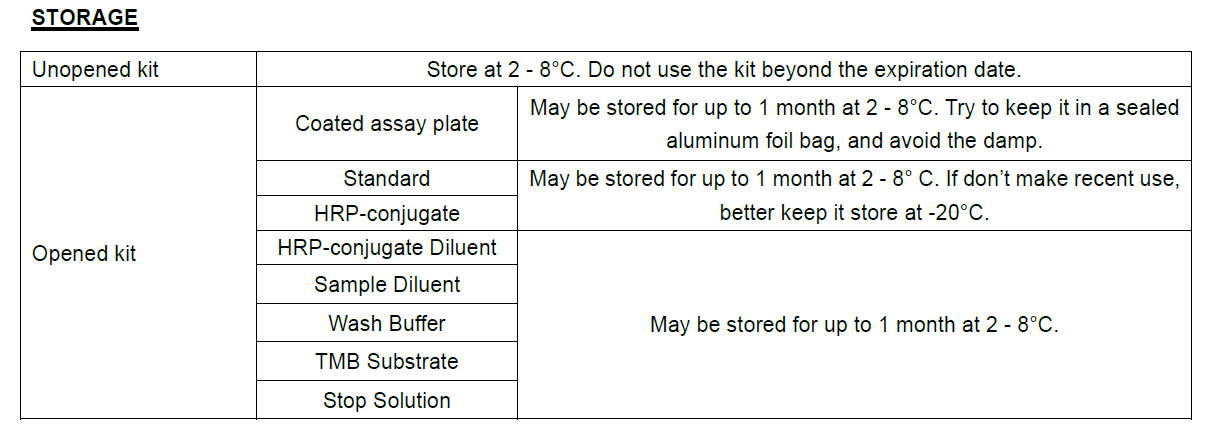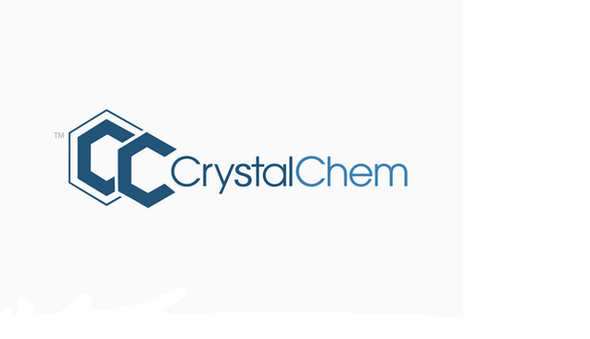Description
For the quantitative determination of pig neutrophil gelatinase-associated lipocalin (NGAL) concentrations in serum, plasma, tissue homogenates.
This package insert must be read in its entirety before using this product.
PRINCIPLE OF THE ASSAY
This assay employs the competitive inhibition enzyme immunoassay technique. The microtiter plate provided in this kit has been pre-coated with NGAL. Standards or samples are added to the appropriate microtiter plate wells with Horseradish Peroxidase (HRP) conjugated antibody preparation specific for NGAL. The competitive inhibition reaction is launched between with pre-coated NGAL and NGAL in samples. A substrate solution is added to the wells and the color develops in opposite to the amount of NGAL in the samples. The color development is stopped and the intensity of the color is measured.
DETECTION RANGE
7.8 pg/ml-500 pg/ml.
SENSITIVITY
The minimum detectable dose of pig NGAL is typically less than 1.95 pg/ml.
The sensitivity of this assay, or Lower Limit of Detection (LLD) was defined as the lowest protein concentration that could be differentiated from zero.
SPECIFICITY
This assay has high sensitivity and excellent specificity for detection of pig NGAL. No significant cross-reactivity or interference between pig NGAL and analogues was observed.
Note: Limited by current skills and knowledge, it is impossible for us to complete the cross-reactivity detection between pig NGAL and all the analogues, therefore, cross reaction may still exist.
PRECISION
Intra-assay Precision (Precision within an assay): CV%<8%
Three samples of known concentration were tested twenty times on one plate to assess.
Inter-assay Precision (Precision between assays): CV%<10%
Three samples of known concentration were tested in twenty assays to assess.
LIMITATIONS OF THE PROCEDURE
- FOR RESEARCH USE ONLY. NOT FOR USE IN DIAGNOSTIC PROCEDURES.
- The kit should not be used beyond the expiration date on the kit label.
- Do not mix or substitute reagents with those from other lots or sources.
- If samples generate values higher than the highest standard, dilute the samples with Sample Diluent and repeat the assay.
- Any variation in Sample Diluent, operator, pipetting technique, washing technique, incubation time or temperature, and kit age can cause variation in binding.
- This assay is designed to eliminate interference by soluble receptors, binding proteins, and other factors present in biological samples. Until all factors have been tested in the Immunoassay, the possibility of interference cannot be excluded.
*FOR RESEARCH USE ONLY. NOT FOR USE IN DIAGNOSTIC PROCEDURES.*


*Provided this is within the expiration date of the kit.
OTHER SUPPLIES REQUIRED
- Microplate reader capable of measuring absorbance at 450 nm, with the correction wavelength set at 540 nm or 570 nm.
- An incubator which can provide stable incubation conditions up to 37°C±0.5°C.
- Squirt bottle, manifold dispenser, or automated microplate washer.
- Absorbent paper for blotting the microtiter plate.
- 100ml and 500ml graduated cylinders.
- Deionized or distilled water.
- Pipettes and pipette tips.
- Test tubes for dilution
PRECAUTIONS
The Stop Solution provided with this kit is an acid solution. Wear eye, hand, face, and clothing protection when using this material.
SAMPLE COLLECTION AND STORAGE
- Serum Use a serum separator tube (SST) and allow samples to clot for two hours at room temperature or overnight at 4°C before centrifugation for 15 minutes at 1000 g. Remove serum and assay immediately or aliquot and store samples at -20°C or -80°C. Avoid repeated freeze-thaw cycles.
- Plasma Collect plasma using EDTA, or heparin as an anticoagulant. Centrifuge for 15 minutes at 1000 ×g at 2-8°C within 30 minutes of collection. Assay immediately or aliquot and store samples at -20°C or -80°C. Avoid repeated freeze-thaw cycles.
- Tissue Homogenates 100mg tissue was rinsed with 1XPBS, homogenized in 1 ml of 1X PBS and stored overnight at -20°C. After two freeze-thaw cycles were performed to break the cell membranes, the homogenates were centrifuged for 5 minutes at 5000 x g, 2 - 8°C. The supernate was removed and assayed immediately. Alternatively, aliquot and store samples at -20°C or -80°C. Centrifuge the sample again after thawing before the assay. Avoid repeated freeze-thaw cycles.






